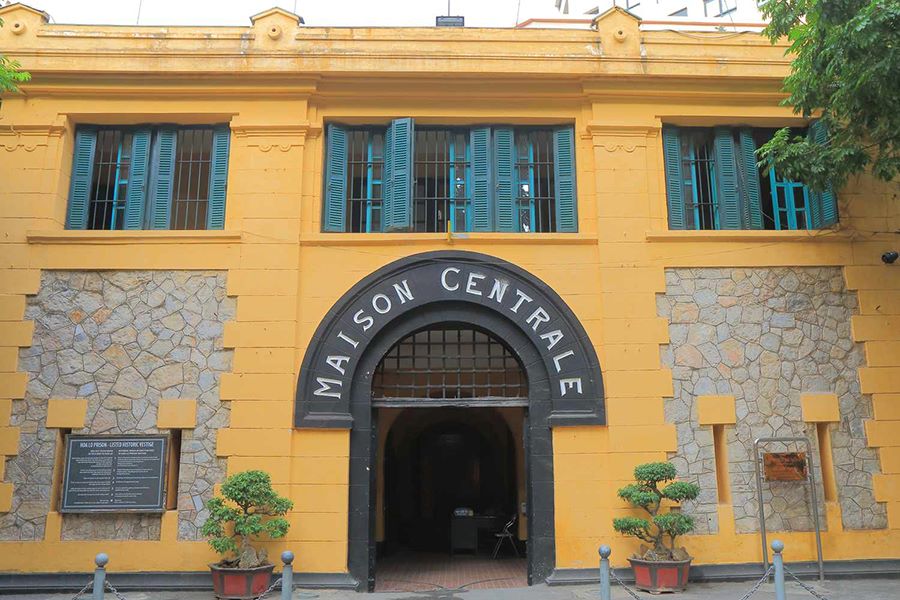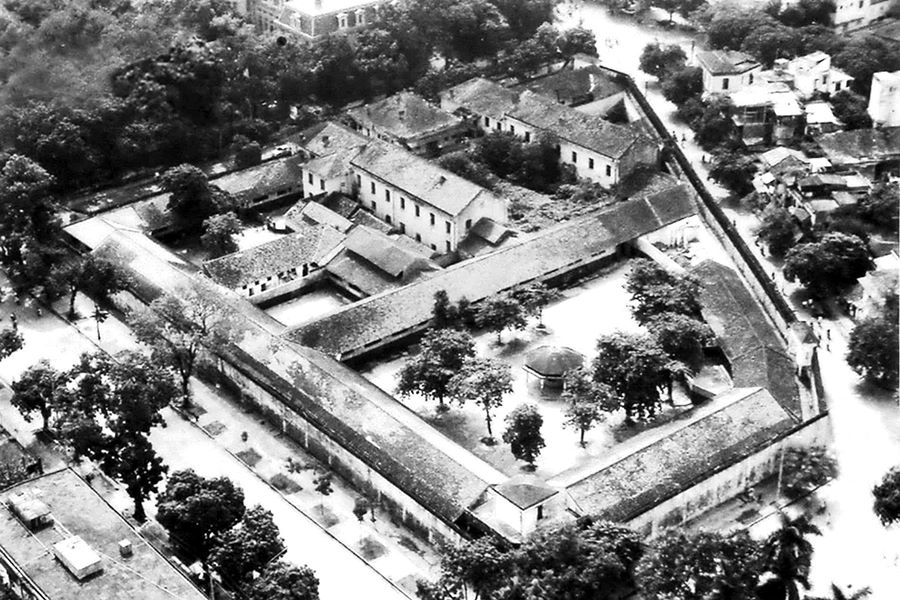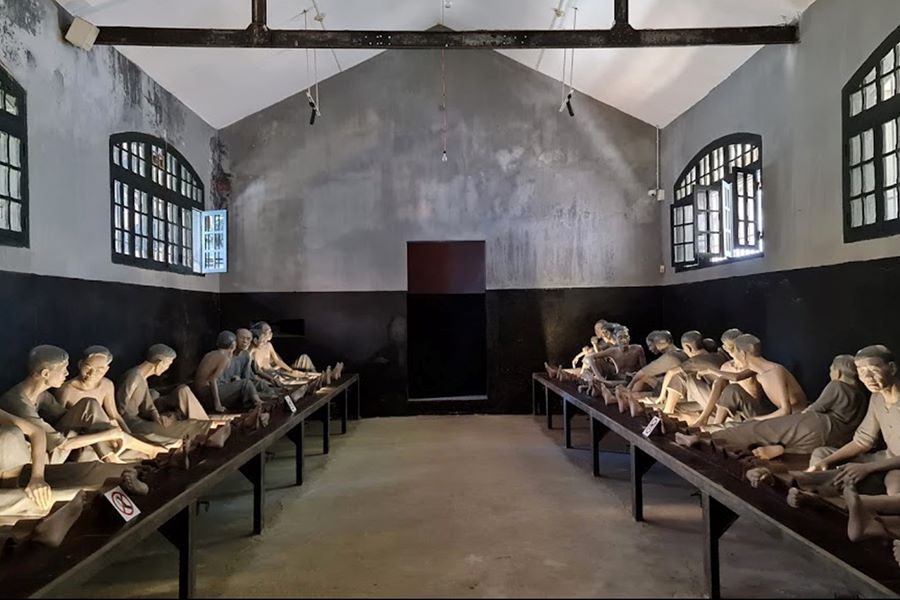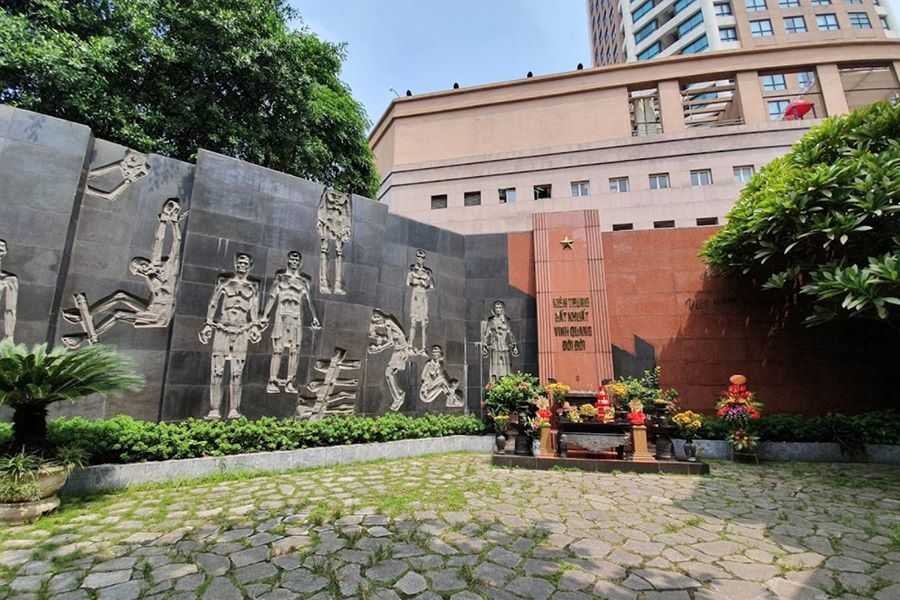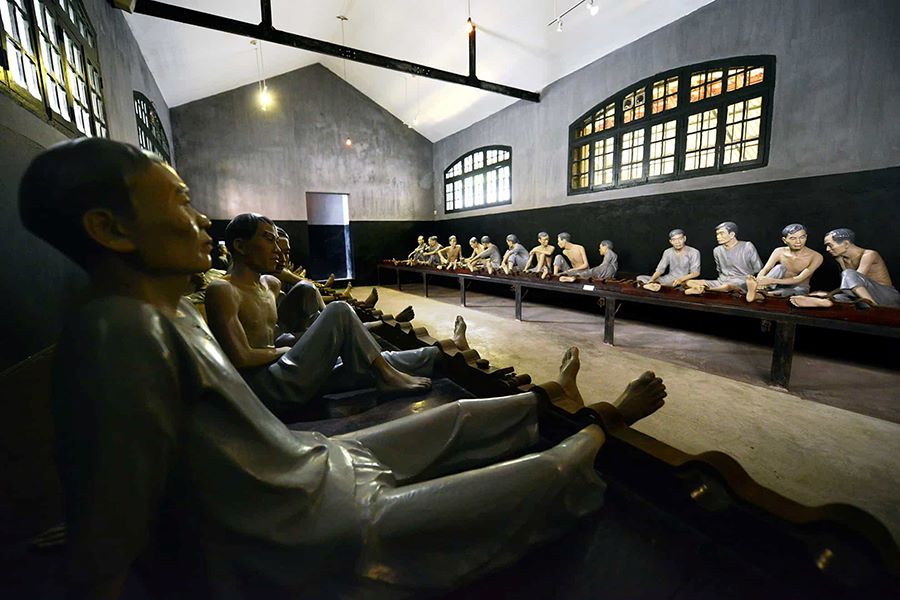Hoa Lo Prison known as hell on earth, now has become a notorious destination for many domestic and foreign tourists. Hoa Lo Relics is situated in the center of Hanoi, on Hoa Lo Street, Hoan Kiem District, and is one of the remarkable destinations in Hanoi attracting a lot of foreign tourists in their Indochina tours. Hoa Lo Prison has a total area of over 12,000 m2 and is one of the biggest and most fortified prisons in Indochina at the time.
Hoa Lo Prison Location
Address: No. 1 Hoa Lo Street, Hoan Kiem District, Hanoi, Vietnam
Conveniently situated in the heart of Hanoi, Hoa Lo Prison is only a fifteen-minute stroll from Hoan Kiem Lake. Visitors can so easily access this website from any location in the city. There are many popular ways to get around, including public buses, motorbikes, taxis, and cars.
If you would want to travel by bus, routes 2, 9, 40, and 49 all stop close to the prison. Should you drive, parking is available at Hoa Lo Prison's entrance.
Hoa Lo Prison Opening Hours – Entrance Fees
- Opening hours of Hoa Lo Prison: From 8.00 am to 5.00 pm every day
- Entrance fee to Hoa Lo Prison: 50,000 VND/ person
Hoa Lo Prison History & Famous Inmates
Hoa Lo Prison was built by the French between 1896 and 1901, while Vietnam was still a part of French Indochina. The first name of the institution was Maison Centrale, a euphemism for French prisons that was widely used. Political prisoners fighting for independence during the conflict were housed at the prison. By 1954, it held close to 2,000 prisoners who lived in horrific conditions and were tied to walls by the dozen. Across the region, the French had employed the gruesome guillotine to execute several Vietnamese insurgents.
The prison was turned into a Vietnamese establishment in 1954 when the French were forced to leave Hanoi. This location housed several American pilots taken prisoner during the Second Indochina War, including Senator John McCain and Douglas Peterson, the first ambassador to Vietnam after the war. They were detained there from 1964 to 1973. With the conclusion of the war came the gradual release of the Hoa Lo prisoners. Political rebels were housed in the prison for the next twenty years. When Hanoi began to grow, it closed and was largely dismantled in 1990 to make room for the construction of high-rise buildings.
Hoa Lo Prison Structure
The walls of Hoa Lo Prison, which was formerly believed to be an impenetrable prison in Indochina, measured four meters in height and five meters in thickness. There was barbed wire running around the walls, powered by high-voltage electricity, and the walls were littered with broken glass. The jail's four watchtowers, one at each of its four corners, enable the wardens to monitor the prisoners' every move.
Hoa Lo Prison's interior, which occupied 12,000 square meters, was separated into several sections, including a residence for guards, a medical facility, a building for producing iron and textiles, and seven houses for accused inmates. Additionally, there existed a dreadful location called the cachot, which served as a prison for aggressive offenders or those with oppositional behaviors. The lack of air, light, and space in the cachot made it seem like the worst of hell. For all the Vietnamese detainees at the time, it was genuinely a nightmare.
There are terrifying iron shackles, cruel torture devices, a menacing French guillotine, and statues of prisoners with leg chains within the prison. Every day, the guards here would ruthlessly beat and torment the Vietnamese detainees. Electric shock, hanging upside-down, and improper rice feeding were among the torture methods. Your viewpoint, comprehension, and admiration of the revolutionary warriors' spirit and the Vietnamese people's humanitarian treatment of American prisoners throughout the war will all be improved by visiting this jail.
Hoa Lo Prison Travel Guide
- Bring no flammables, explosives, or firearms.
- Avoid smoking.
- Never move or touch the displays.
- Just at the memorial location should flowers and incense be burned.
A historically noteworthy place in Hanoi is Hoa Lo Prison, which has witnessed the unshakable determination and honorable sacrifice of the Vietnamese people for their motherland.

